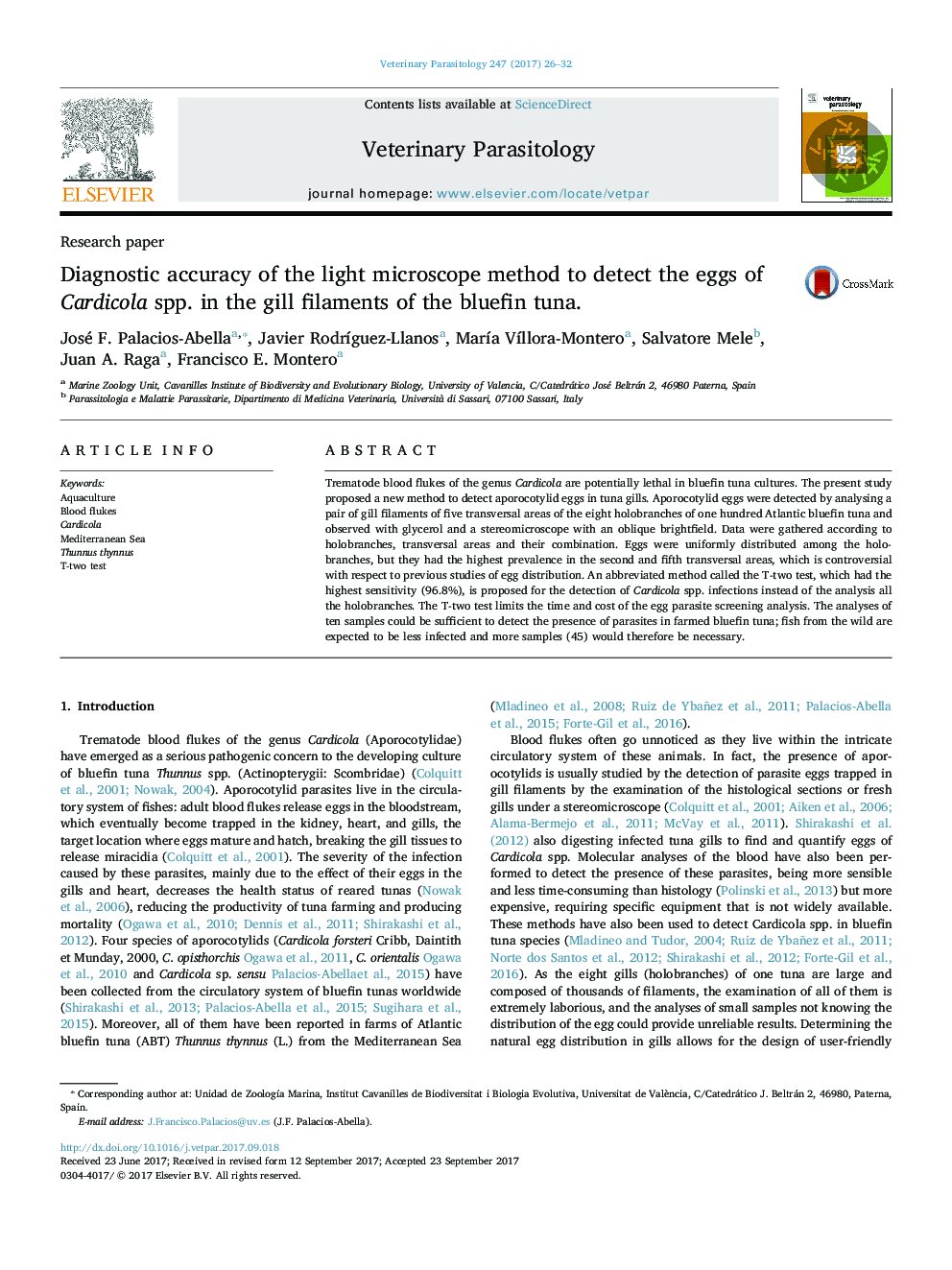| Article ID | Journal | Published Year | Pages | File Type |
|---|---|---|---|---|
| 5545521 | Veterinary Parasitology | 2017 | 7 Pages |
Abstract
Trematode blood flukes of the genus Cardicola are potentially lethal in bluefin tuna cultures. The present study proposed a new method to detect aporocotylid eggs in tuna gills. Aporocotylid eggs were detected by analysing a pair of gill filaments of five transversal areas of the eight holobranches of one hundred Atlantic bluefin tuna and observed with glycerol and a stereomicroscope with an oblique brightfield. Data were gathered according to holobranches, transversal areas and their combination. Eggs were uniformly distributed among the holobranches, but they had the highest prevalence in the second and fifth transversal areas, which is controversial with respect to previous studies of egg distribution. An abbreviated method called the T-two test, which had the highest sensitivity (96.8%), is proposed for the detection of Cardicola spp. infections instead of the analysis all the holobranches. The T-two test limits the time and cost of the egg parasite screening analysis. The analyses of ten samples could be sufficient to detect the presence of parasites in farmed bluefin tuna; fish from the wild are expected to be less infected and more samples (45) would therefore be necessary.
Related Topics
Life Sciences
Agricultural and Biological Sciences
Animal Science and Zoology
Authors
José F. Palacios-Abella, Javier RodrÃguez-Llanos, MarÃa VÃllora-Montero, Salvatore Mele, Juan A. Raga, Francisco E. Montero,
